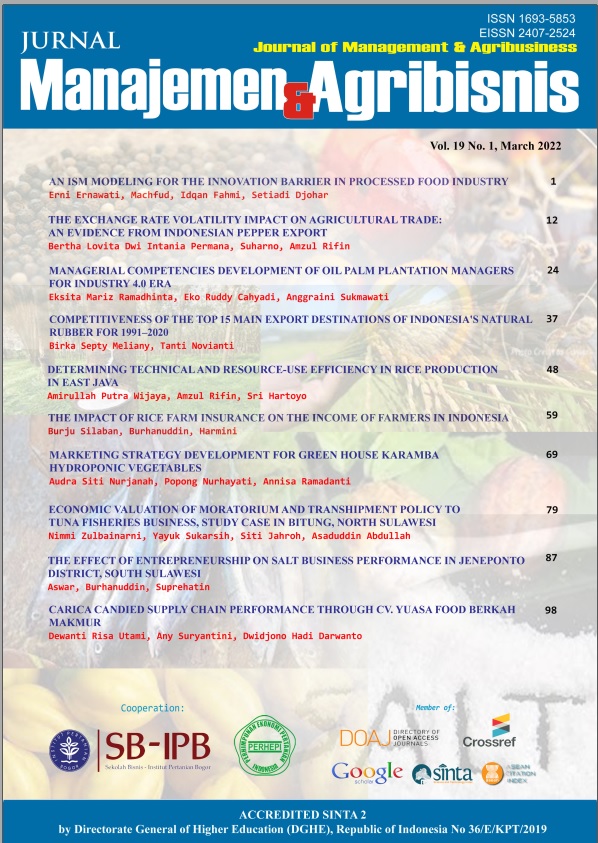Mapping Fisheries Cold Chain in Western Java Using a Value Chain Perspective
Abstract
The fisheries sector is one of Indonesia's promising industries. This industry accounts for approximately 2.6 percent of total national GDP. However, fishery products are perishable and contribute to a total loss of approximately 40due to the fishery cold chain implementation was not yet optimal. Cold chain facilities were out of reach for small fisheries due to the large investments required. The study aimed to describe the current state of fisheries cold chain implementation. In the fisheries value chain, value chain mapping was used to enable fact-finding and linkage between existing conditions, chain actors, and governance. The research was carried out in two areas: Banten and West Java. The research conducted 90 interviews with fishermen, 9 collecting traders, 6 big traders, and 6 transporters. The research found that there are numerous channels in the chain governance. These channels have different requirements and demands in both traditional and modern markets. Furthermore, the fisheries cold chains in both regions varied based on key features and the inclusion of small stakeholders in the business relation. In conclusion, limited cold chain infrastructures were utilized by the actors directly and indirectly for decent work and reduce poverty.
Keywords: cold chain, fisheries industry, SDG 1, SDG 8, value chain analysis
Authors
Authors who publish with this journal agree to the following terms:
- Authors retain copyright and grant the journal right of first publication with the work simultaneously licensed under a Creative Commons Attribution License that allows others to share the work with an acknowledgement of the work's authorship and initial publication in this journal.
- Authors are able to enter into separate, additional contractual arrangements for the non-exclusive distribution of the journal's published version of the work (e.g., post it to an institutional repository or publish it in a book), with an acknowledgement of its initial publication in this journal.
- Authors are permitted and encouraged to post their work online (e.g., in institutional repositories or on their website) prior to and during the submission process, as it can lead to productive exchanges, as well as earlier and greater citation of published work (See The Effect of Open Access).

